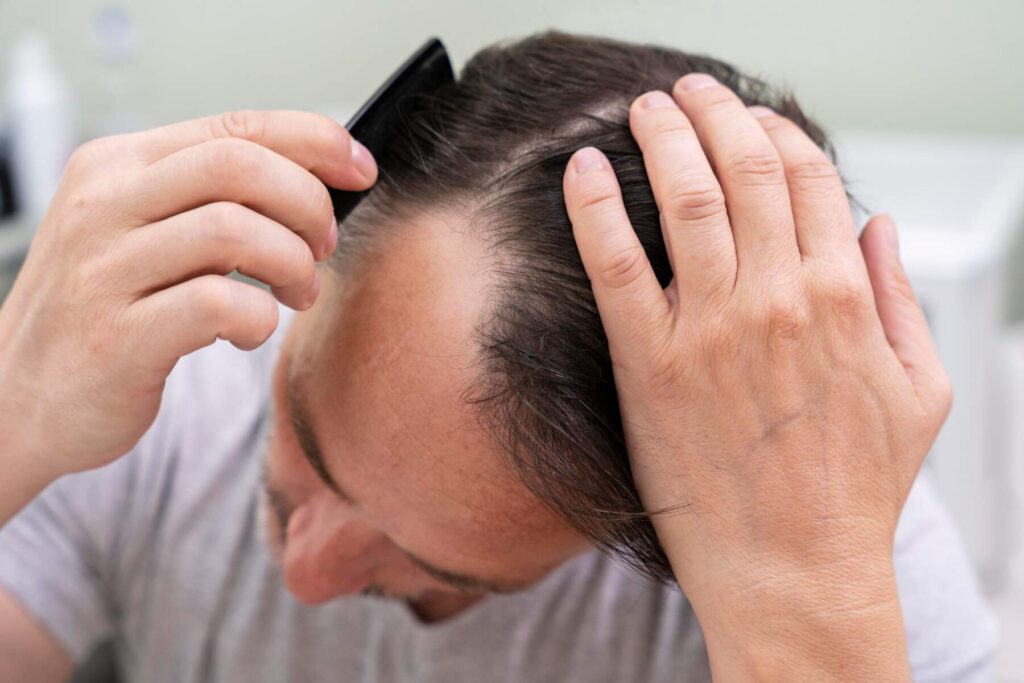Hair restoration techniques have come a long way, and crown hair transplant procedures are now among the most sought-after solutions for individuals facing hair thinning or bald spots on the top of the head. But one commonly asked question remains: Does hair type influence the outcome of a crown hair transplant? The answer is yes—your natural hair type plays a significant role in how successful and natural-looking the results can be. Whether you have curly, straight, wavy, or coiled hair, understanding the impact of hair texture can help you set realistic expectations for a Crown Hair Transplant in Dubai and choose the right approach for optimal results.
Understanding Crown Hair Transplant
What Is a Crown Hair Transplant?
A crown hair transplant focuses on restoring hair growth at the top back portion of the scalp, known as the vertex or crown area. This area is prone to thinning due to male and female pattern baldness, and it presents unique challenges due to its circular growth pattern and often extensive hair loss.
Using either Follicular Unit Extraction (FUE) or Follicular Unit Transplantation (FUT), surgeons extract healthy hair follicles from donor sites and implant them in the crown area. Over time, these grafts grow naturally, blending with existing hair.

Why Is the Crown Area Different?
The crown’s spiral growth pattern requires meticulous planning and angling of grafts to replicate a natural look. Additionally, this area usually requires more grafts than other regions of the scalp, making the transplant process slightly more complex.
The Role of Hair Type in Transplant Success
Hair Texture and Volume
Your hair’s texture—whether it’s fine, medium, or coarse—directly impacts the visual density after a transplant. Coarser or curlier hair types provide more coverage per graft, making the area appear fuller with fewer follicular units. This can be particularly advantageous for crown transplants, where density is essential for a seamless result.
In contrast, fine or straight hair may require a higher number of grafts to achieve similar visual density, especially in Dubai’s harsh sun where thinning can appear more obvious.
Curl Pattern and Growth Direction
Hair with a natural curl or wave tends to add volume and bounce, which enhances the post-transplant appearance. These curls help conceal any underlying gaps more effectively than straight strands. Additionally, curly hair tends to grow in unique directions, which can be harmonized with the crown’s natural spiral during the transplant process.
Scalp Characteristics
The contrast between hair and scalp color also plays a role in how hair density is perceived. For example:
-
Light scalp with dark hair: thinning may appear more noticeable.
-
Low contrast (e.g., dark scalp with dark hair): the coverage can appear denser.
Understanding this interaction is essential when planning a Crown Hair Transplant in Dubai, especially given the multicultural population with a variety of hair types and scalp tones.
Matching Hair Type with the Right Technique
FUE vs. FUT: Which One Suits Your Hair?
-
FUE (Follicular Unit Extraction): Ideal for individuals with thick, curly, or coarse hair. It offers a minimally invasive solution with natural-looking results and a shorter recovery time.
-
FUT (Follicular Unit Transplantation): Suitable for those needing a large number of grafts, such as individuals with fine or straight hair where visual density is harder to achieve.
Your hair type can influence which method a specialist recommends to ensure natural results that blend perfectly with your existing hair.

Key Takeaways for Patients in Dubai
Choosing a crown hair transplant isn’t a one-size-fits-all solution. Hair type plays a major role in:
-
Determining the number of grafts needed
-
Selecting the right transplant technique
-
Planning graft placement based on curl direction and thickness
-
Achieving realistic, natural-looking density
Who Benefits Most?
-
Coarse or curly hair types often achieve greater visual coverage with fewer grafts.
-
Fine or straight hair types may need more grafts and meticulous placement for fuller results.
-
High contrast between scalp and hair color requires strategic graft distribution.
Why It Matters in Dubai’s Climate
Dubai’s climate—hot, humid, and sunny—poses additional challenges for people dealing with hair loss. Individuals with finer hair types may notice their thinning areas more clearly under intense sunlight. A well-planned Crown Hair Transplant Dubai considers environmental factors alongside hair type to ensure long-lasting and natural results that withstand local conditions.
Final Thoughts
If you’re considering a Crown Hair Transplant, understanding your hair type is a critical first step toward successful treatment. The texture, density, curl pattern, and scalp visibility all contribute to how natural your results will look and how many sessions you might need.

